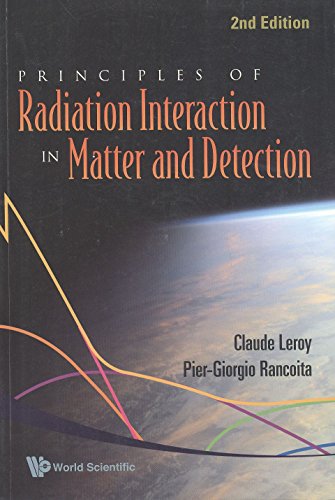Principles Of Radiation Interaction In Matter And Detection pdf
Par soukup michael le mardi, juillet 26 2016, 15:37 - Lien permanent
Principles Of Radiation Interaction In Matter And Detection. Leroy C., Rancoita P. G.

Principles.Of.Radiation.Interaction.In.Matter.And.Detection.pdf
ISBN: 9812818278,9789812818270 | 951 pages | 24 Mb

Principles Of Radiation Interaction In Matter And Detection Leroy C., Rancoita P. G.
Publisher: WS
If these really do exist, there would be millions passing through us every second. The most popular idea of Dark Matter we have, is that is made of WIMPs, or Weakly Interacting Massive Particles. The Terahertz region of the electromagnetic spectrum, which spans from 100 GHz to 10 THz, has attracted a lot of attention in recent years due to the developments in new generation and detection techniques and due to the potential applications in the commercial, scientific, and government areas. THz Principles: THz principles and interaction with matter. It is due to these properties that they cannot be easily detected. Baryonic matter can, in principle, be detected through the electromagnetic radiation it releases. THz Fundamentals: Electromagnetic radiation and propagation fundamentals. Principles Of Radiation Interaction In Matter And Detection. Neutrinos have nearly no mass, no charge and interact negligibly with ordinary matter. The image shows emission from the center of the Milky Way, detected by PLANCK satellite. Some of its properties could be defined already, we obviously couldn't see it, so it didn't interact with electromagnetic radiation (light would simply pass straight through it) but its main property was that it had mass. But there's a problem: the amounts of baryonic matter detected via Much of this tenuous, filamentary gas remains undetected, but astronomers expect that it could most likely be found between interacting galaxy clusters, where the filaments are compressed and heated up, making them easier to spot. The Planck Satellite has observed a very unique emission of radio radiation from the center of the Milky Way, moving scientists closer than ever to a solution to the origin of dark matter. Dark matter particles are also usually very scattered and do not interact with each other.